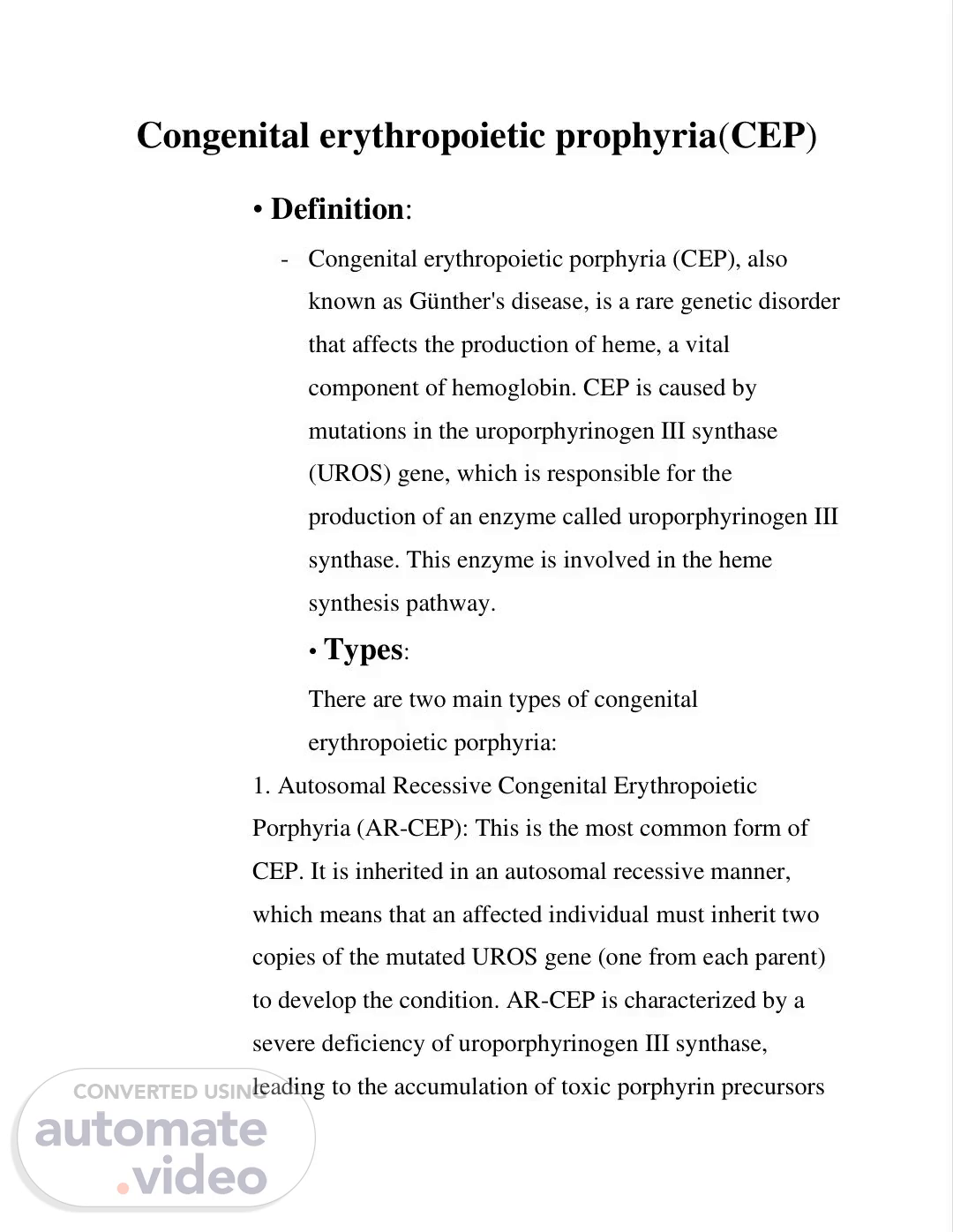
Congenital erythropoietic prophyria(CEP)
Scene 1 (0s)
[Audio] Congenital erythropoietic prophyria(CEP) Definition: - Congenital erythropoietic porphyria (CEP), also known as Günther's disease, is a rare genetic disorder that affects the production of heme, a vital component of hemoglobin. CEP is caused by mutations in the uroporphyrinogen III synthase (UROS) gene, which is responsible for the production of an enzyme called uroporphyrinogen III synthase. This enzyme is involved in the heme synthesis pathway. Types: There are two main types of congenital erythropoietic porphyria: 1. Autosomal Recessive Congenital Erythropoietic Porphyria (AR-CEP): This is the most common form of CEP. It is inherited in an autosomal recessive manner, which means that an affected individual must inherit two copies of the mutated UROS gene (one from each parent) to develop the condition. AR-CEP is characterized by a severe deficiency of uroporphyrinogen III synthase, leading to the accumulation of toxic porphyrin precursors.
Scene 2 (1m 19s)
[Audio] in the body. It typically presents early in life and is associated with symptoms such as photosensitivity (sensitivity to sunlight), blistering skin lesions, scarring, and abnormalities in the teeth and bones. 2. Late-Onset Congenital Erythropoietic Porphyria (LOCEP): This is a milder form of CEP that typically presents later in life, often during adolescence or adulthood. LOCEP is also inherited in an autosomal recessive manner. Although it is less severe than AR-CEP, it still results in the accumulation of porphyrin precursors and can cause symptoms such as photosensitivity, blistering, and scarring of the skin. - It's important to note that there is some clinical variability within both types of congenital erythropoietic porphyria, and the severity of symptoms can vary among affected individuals. Treatment options for CEP typically involve managing symptoms and avoiding triggers such as sunlight exposure. Treatment: - Blood transfusions and removing the spleen are treatments which may reduce porphyrin production by the bone marrow. Activated charcoal given by mouth is sometimes effective. Stem cell.
Scene 3 (2m 39s)
[Audio] transplantation and gene therapy may also be options in the future..